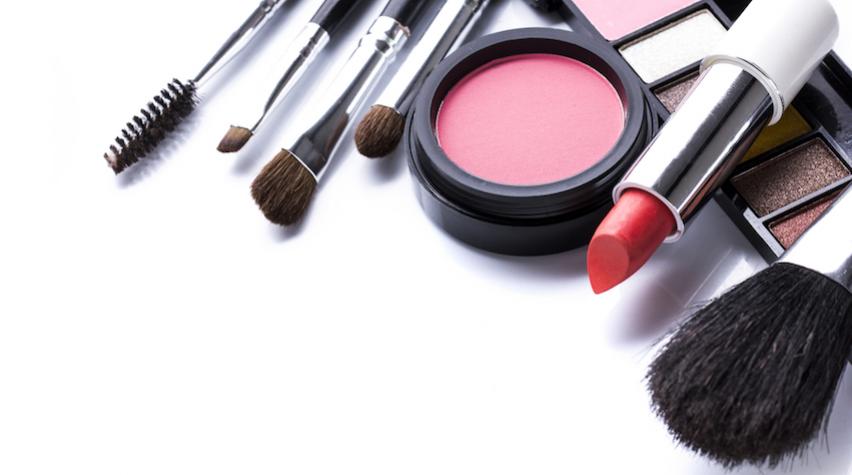
Our skin is our largest and fastest-growing organ. It is a part of the integumentary system and plays roles in our excretory, immune, and nervous systems, among others. Skin is the body’s first defense against the outside elements, helps regulate body temperature, and permits the sensations of touch, warmth, and cold. In the past century, the use of cosmetics, defined as products that we put on our skin, has become immensely popular. Whether it is to accentuate facial features or to improve skin health, cosmetics are widely available to enhance our skin.
However, after use, cosmetic products are either rinsed off and sent to the sewers, or disposed of and sent to a landfill. This waste is driving cosmetic companies to consider their impact on the planet and the sustainability of their products. Like many other sectors, the cosmetics industry is following a growing trend to create products that are ethically sourced, have eco-friendly formulations and supply chains, and have a minimal manufacturing footprint on the environment. Researchers are using these principles to enhance cosmetic formulations and their packaging.
Formulation
Cosmetic industries can improve the formulation of their products by increasing their biodegradable content. Including biodegradable ingredients allows wastewater plants to use microorganism-induced aerobic degradation instead of other energy-intensive purification methods. A popular example of biodegradable ingredients are organic ingredients, which are made up of 70–95% organic raw material (not including water). Organic cosmetic production processes preserve the natural chemical characteristics of organic raw materials through extraction, purification, and other processing steps.
One of the biggest pollution-fighting hurdles has been finding ingredients that perform similarly to the eco-unfriendly versions that currently dominate the market. This is evident in the use of microplastics for exfoliating beads, a regular ingredient in some face and body washes. A single use of a product with microbeads could release between 5,000 and 94,000 beads. Data from the Cosmetics Europe Survey and Euromonitor International suggest that 244,130 tons of microbeads are used each year in European Union (EU) countries. Although these plastic exfoliants can be beneficial to our skin, they are damaging to aquatic ecosystems. And, they often escape wastewater treatment plants due to their small size and inability to degrade through normal treatment processes. Researchers from the Univ. of Bath created Naturbead, a biodegradable bead made of cellulose that can serve as a direct replacement for synthetic exfoliants, thus maintaining the same cosmetic performance properties while reducing plastic pollution in wastewater.
Packaging
When manufacturing a sustainable cosmetic product, it is important to consider its containment. In the journal Cosmetics, Patrizia Cinelli et al. describe the difficulties involved in reusing or recycling cosmetic packaging. It is not feasible for companies to collect cosmetic containers after use, and it would be difficult for companies to adequately clean collected containers “due to packaging being often strongly contaminated by residues from the greasy and creamy cosmetic product,” write the authors.
Rigid packaging made of high-density petroleum-based polyethylene, polypropylene, and/or polyethylene terephthalate is often scrapped or incinerated, creating non-biodegradable waste or air pollution. This predicament has encouraged companies to create compostable or biodegradable packaging that helps to reduce their environmental footprint.
Biodegradable
Incorporating biodegradable packaging reduces a product’s impact on landfills and improves its sustainability. Polylactic acid (PLA) is a bio-based and compostable packing material that can replace plastic packaging. It provides a similar rigidity and resistance to mechanical stress as its non-biodegradable counterparts, such as petroleum and other plastic derivatives. Its degradation depends on time and temperature, among other variables. However, under certain conditions, it becomes an amorphous material. Therefore, it can only be used in some products or processes.
Polyhydroxyalkanoate (PHA), another biodegradable polymer, is produced by bacteria. Preliminary research has shown it to have a similar versatility to plastics, but its long-term durability as product packaging is still unknown.
The cosmetic industry is full of opportunities for innovation as it seeks to improve its sustainability and add corporate social responsibility (CSR) into its practices. Due to the widespread use of cosmetic products, even marginal improvements in packaging and formulation could have massive impacts.
Learn more about the present-day technology and the future of engineering sustainable cosmetics at the Engineering Cosmetics and Consumer Products Conference, Nov. 9–10, 2019, in Orlando, FL. We hope to see you there. For more information visit www.aiche.org/eccp.
This article originally appeared in the Technical Entity Trends column in the October 2019 issue of CEP. Members have access online to complete issues, including a vast, searchable archive of back-issues found at aiche.org/cep.


